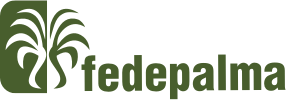Properties of medium density fibreboard from oil palm empty fruit bunch fibre.

Author
Ridzuan, Ramli
Mohd Ariff, Jamaludin
Stephen, Shaler
Estadisticas
Abstract
Medium density fibreboard (MDF) is increasingly popular in the world today. In Malaysia, MDF is made using rubberwood. However, with the diminishing supply of the wood, an alternative raw material is needed. Empty fruit bunches (EFB) is a readily available waste from the Gil palm industry, possibly suitable for MDF. It, however, contains residual Gil which had to be removed by two pre-treatments - boiling in water and 2 per cent sodium hydroxide (NaOH). In addition, two resin contents (4and 6 per cent) were used in a factorial 2 x 2 experiments. Removing the oil improved the MDF properties. Although NaOH removed more oil, its fibre was coarser with a higher bulk density (57 vs. 42 kg m-3). The panels produced with the water pre-treated fibre therefore had better mechanical[modulus of rupture (MOR), modulus of elasticity (MOE) and infernal bonding strength (lB)] and physical [water absorption (WA), thickness swelling (TS) and linear expansion (LE)] properties than the NaOH pre-treated fibre. The higher resin content (6 per cent) also conferred better mechanical and physical properties. All the panels, except those produced with 4 per cent resin and NaOH, easily met the mínimum strength requirements by the National Particleboard Association (NPA) for MOR, MOE and lB. In contrast, all the panels were below the standards for WA and TS. The LE was also substandard with the exception of the water panels with 6 per cent resin. Although much work remains to be done, EFB seems an eminently suitable raw material for MDF. 17 ref. Medium density fibreboard (MDF) is increasingly popular in the world today. In Malaysia, MDF is made using rubberwood. However, with the diminishing supply of the wood, an alternative raw material is needed. Empty fruit bunches (EFB) is a readily available waste from the Gil palm industry, possibly suitable for MDF. It, however, contains residual Gil which had to be removed by two pre-treatments - boiling in water and 2 per cent sodium hydroxide (NaOH). In addition, two resin contents (4and 6 per cent) were used in a factorial 2 x 2 experiments. Removing the oil improved the MDF properties. Although NaOH removed more oil, its fibre was coarser with a higher bulk density (57 vs. 42 kg m-3). The panels produced with the water pre-treated fibre therefore had better mechanical[modulus of rupture (MOR), modulus of elasticity (MOE) and infernal bonding strength (lB)] and physical [water absorption (WA), thickness swelling (TS) and linear expansion (LE)] properties than the NaOH pre-treated fibre. The higher resin content (6 per cent) also conferred better mechanical and physical properties. All the panels, except those produced with 4 per cent resin and NaOH, easily met the mínimum strength requirements by the National Particleboard Association (NPA) for MOR, MOE and lB. In contrast, all the panels were below the standards for WA and TS. The LE was also substandard with the exception of the water panels with 6 per cent resin. Although much work remains to be done, EFB seems an eminently suitable raw material for MDF.
Medium density fibreboard (MDF) is increasingly popular in the world today. In Malaysia, MDF is made using rubberwood. However, with the diminishing supply of the wood, an alternative raw material is needed. Empty fruit bunches (EFB) is a readily available waste from the Gil palm industry, possibly suitable for MDF. It, however, contains residual Gil which had to be removed by two pre-treatments - boiling in water and 2 per cent sodium hydroxide (NaOH). In addition, two resin contents (4and 6 per cent) were used in a factorial 2 x 2 experiments. Removing the oil improved the MDF properties. Although NaOH removed more oil, its fibre was coarser with a higher bulk density (57 vs. 42 kg m-3). The panels produced with the water pre-treated fibre therefore had better mechanical[modulus of rupture (MOR), modulus of elasticity (MOE) and infernal bonding strength (lB)] and physical [water absorption (WA), thickness swelling (TS) and linear expansion (LE)] properties than the NaOH pre-treated fibre. The higher resin content (6 per cent) also conferred better mechanical and physical properties. All the panels, except those produced with 4 per cent resin and NaOH, easily met the mínimum strength requirements by the National Particleboard Association (NPA) for MOR, MOE and lB. In contrast, all the panels were below the standards for WA and TS. The LE was also substandard with the exception of the water panels with 6 per cent resin. Although much work remains to be done, EFB seems an eminently suitable raw material for MDF.
Palabras clave:
Fibras.
Fruto.
Propiedades fisicoquímicas.
Raquis
tableros
Palma de aceite
Fibras.
Fruto.
Propiedades fisicoquímicas.
Raquis
tableros
Palma de aceite


